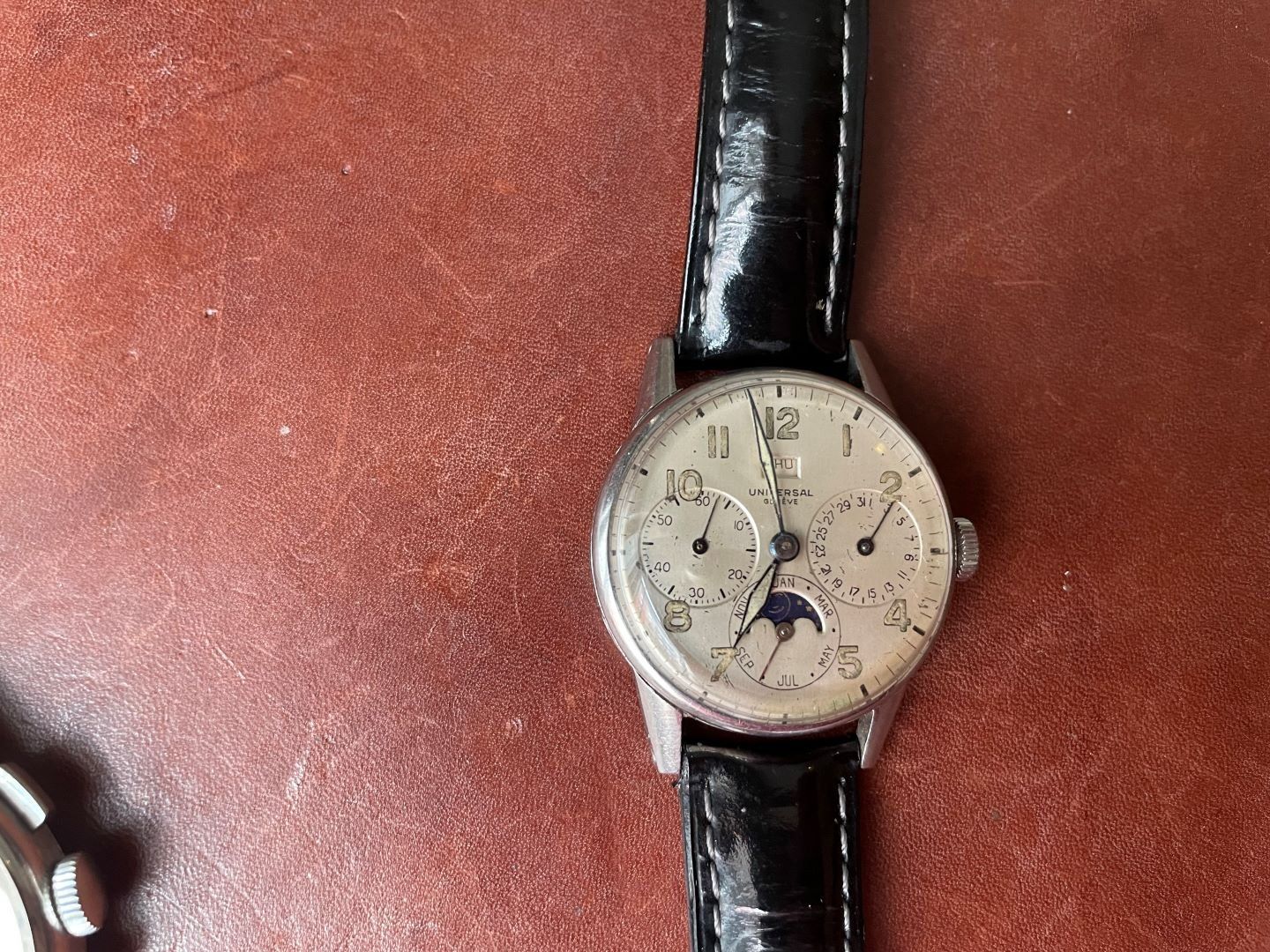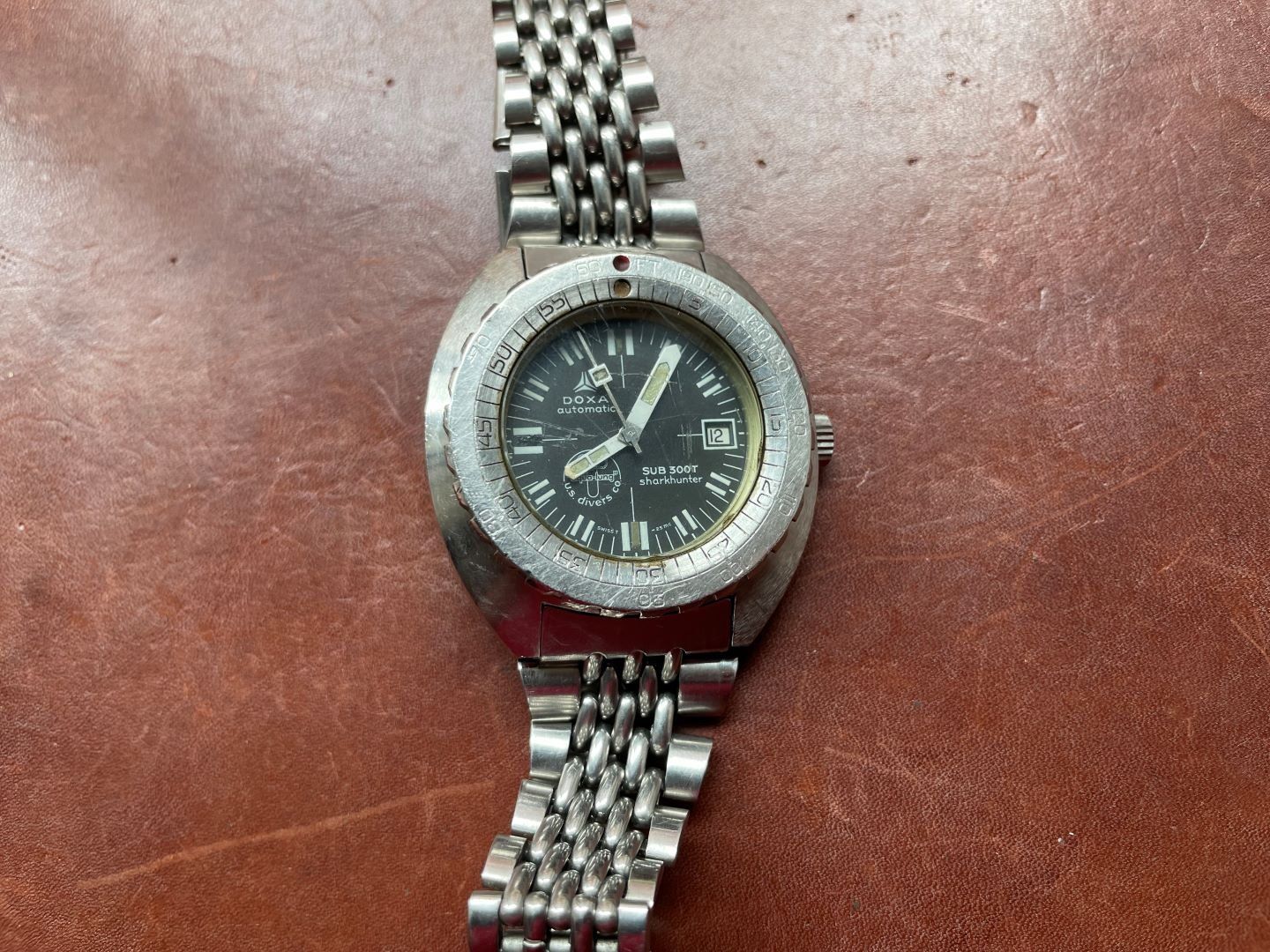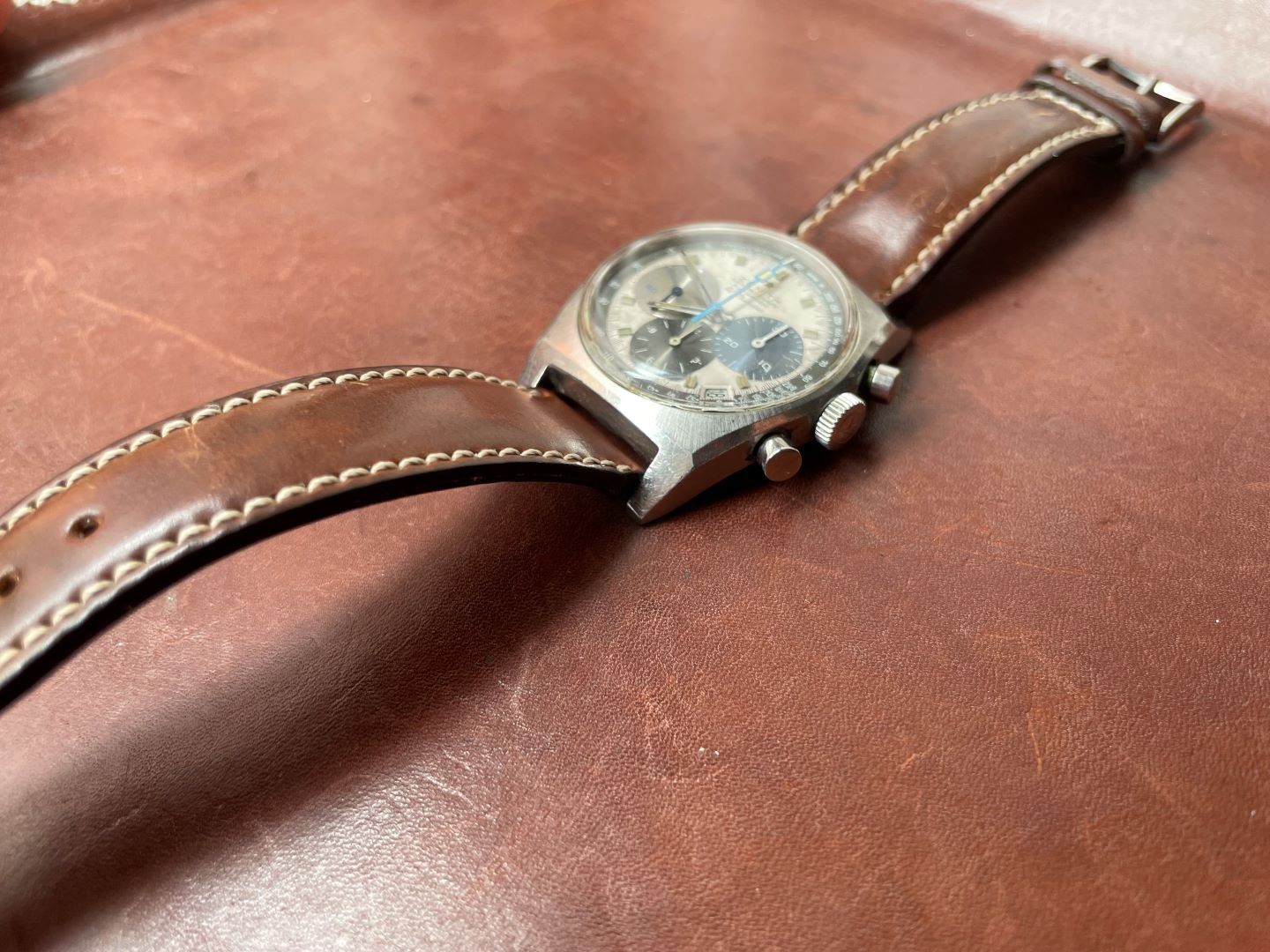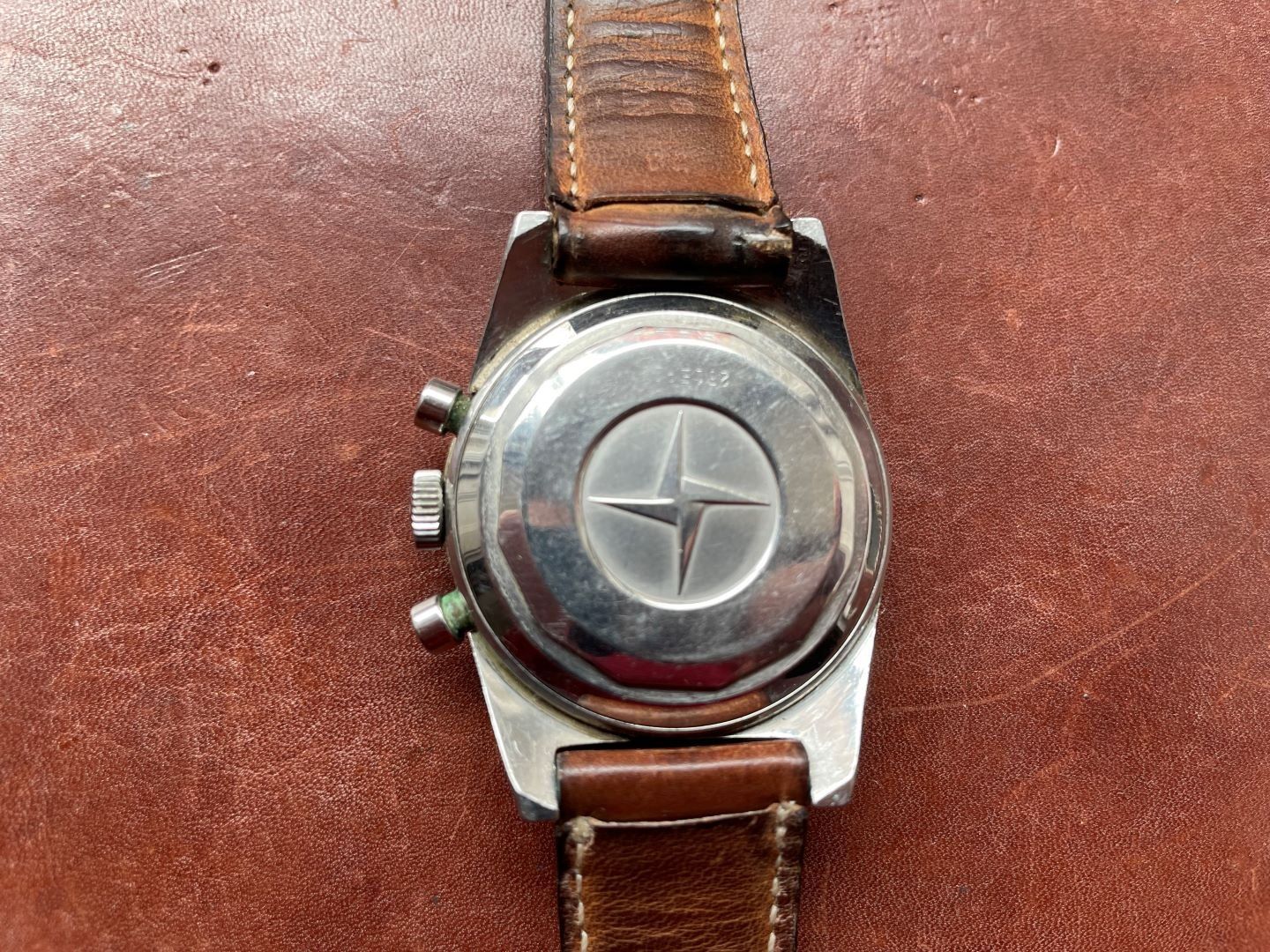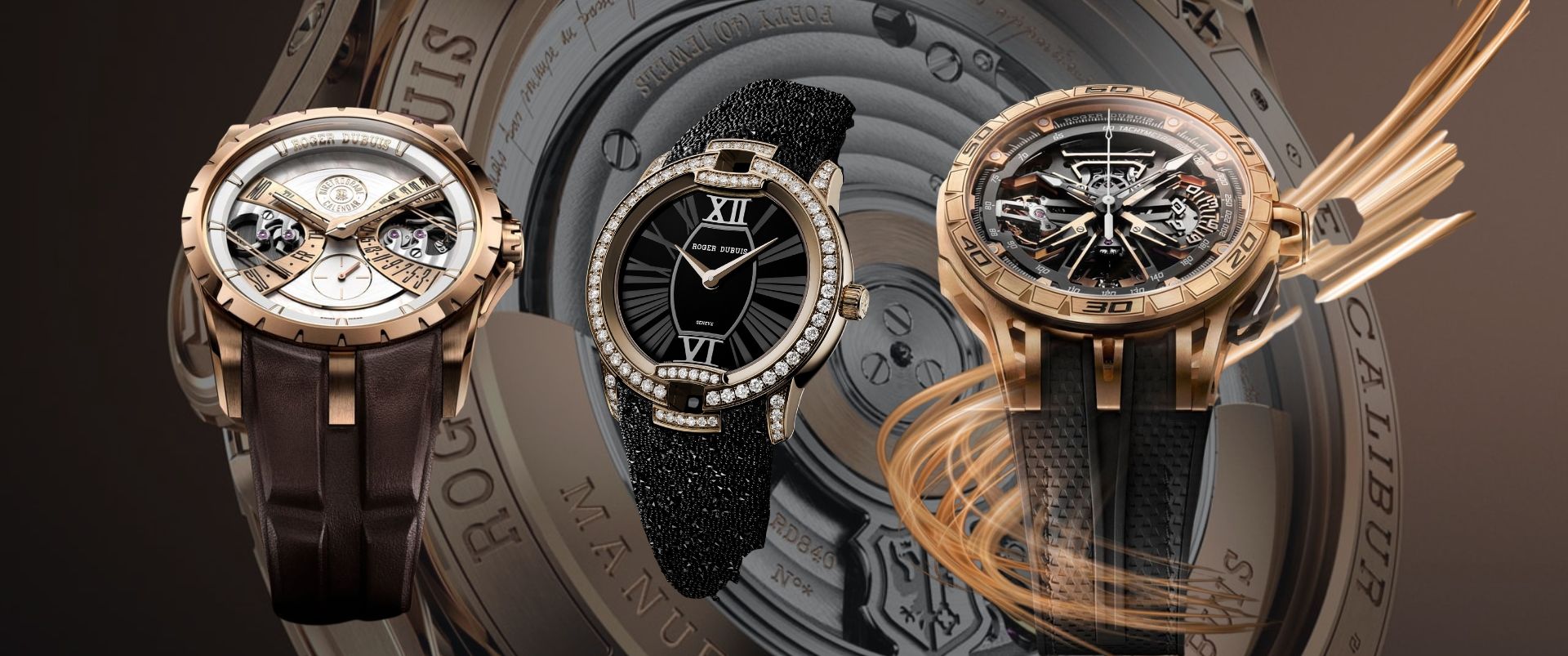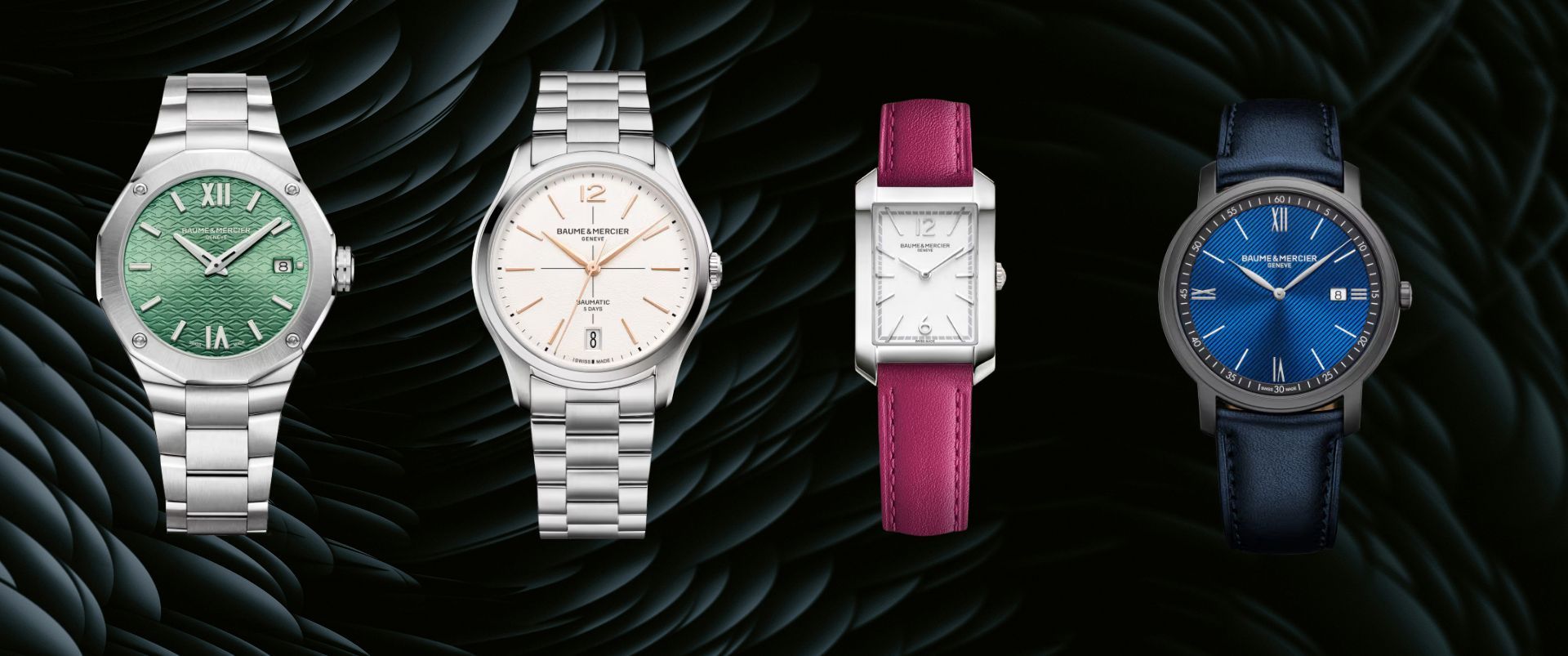THM’s Collector’s Corner With Gregory Selch: Top 5 Vintage Timepieces With A Story
In the last episode, vintage watch expert Gregory Selch took us through some interesting tips on how to maintain our vintage timepieces. It’s now time to explore five more hidden gems from Greg’s watch collection!
THM: Which watch are we going to explore first?
Greg: This is a really fun watch that I wanted to show. It's one of my favorites. And what's cool about it is it's an Omega Constellation. It's a TV dial. These are respirator watches. So to understand what a respirator watch is versus a conventional watch, you can screw things down and make them tight. This watch, everything is square. So how do you keep a square thing waterproof? Well, what they did was they would have rubber gaskets, and the pressure of the water would press the case together and make it tighter. It's a compressor. It's the rubber that keeps it intact. It's not the tightness of a turning. So these watches are constellations, which is a very nice Omega movement. It's a chronometer grade movement and this watch in particular is 18K solid gold, including the bracelet. It is really heavy. When I saw this and I still see them for sale, I can't believe they're being sold for the weight of the gold. In my opinion, gold is going up in price. You're buying it for the weight of the gold.
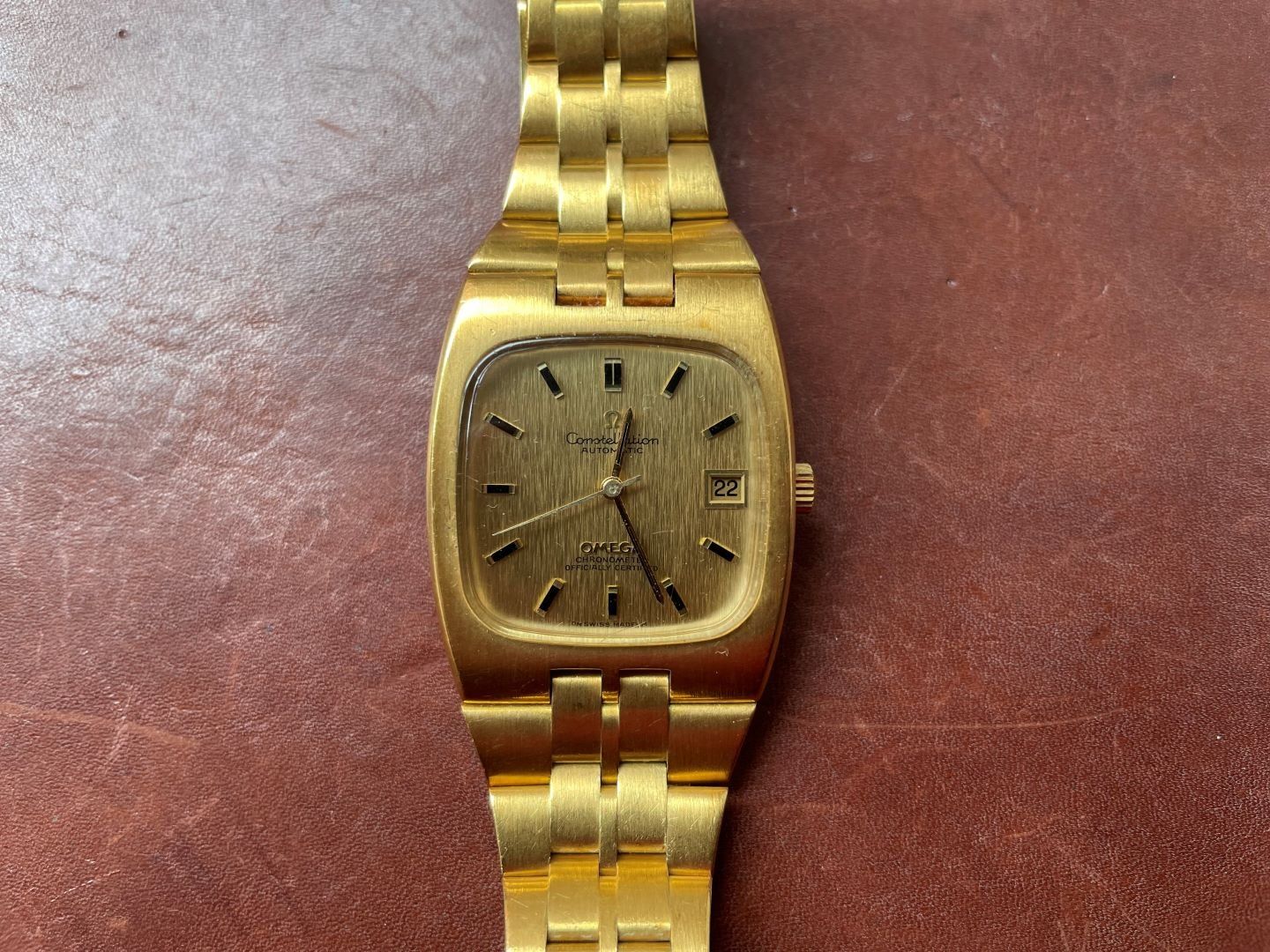
Now, if you, if a person was collecting watches and they say, oh, I saw that people like Royal Oaks. Royal Oak is a very nice watch. Oh, I can get one in solid gold. That would cost you a fortune. And for me wearing it, what's the difference? I'd rather wear one that's less expensive and I can just wear it.
THM: That’s an interesting fact. What do we have next?
Greg: The second watch I brought, I think is one of the greatest watches. These are not expensive, but this is a Tissot. It's a racing dial rally watch that is totally waterproof. They had these rally straps on them and, uh, they had bracelets with holes and things that are like auto racing. Omegas are very sporty too, but these were even more sporty than Omegas and Tissot had its own history, which was fantastic. But these watches are totally unknown. They're essentially Omegas. When I was having different phases in my life where I didn't have too much money to spend on things, I was collecting Tissot. Swiss watches have great movements, are really interesting and funky, and very waterproof and very resistant. Having watches should be about fun. I know that people invest and it's a great way to invest and spread your wealth out into different areas. Vintage watches are a good investment.
THM: What are the watches you suggest that we should invest in?
Greg: I'll just give you a little, a little warm-up. My advice is to buy what you like because you will be the best marketing for that watch you could possibly be. You know, that is, that is my advice is don't buy something because everybody else likes it. I guarantee you they'll stop liking it and then you'll be stuck with it. Buy what you like and you market it.
THM: Well, that’s some great advice and we’ll talk more about it in our episodes later. What do we have next?
Greg: I wanted to talk about Universal Geneve. I've got two watches here, which probably are both from the forties or the fifties. And they're both what we would call moon phase watches. And one is a tri-compax. Watches weren't so big in the forties and fifties. And so having a bigger one would have been 36, 37 millimeters, and a normal size watch was smaller, maybe 30, 34, 33 millimeters. Now, Universal Geneve is one of my favorite companies.
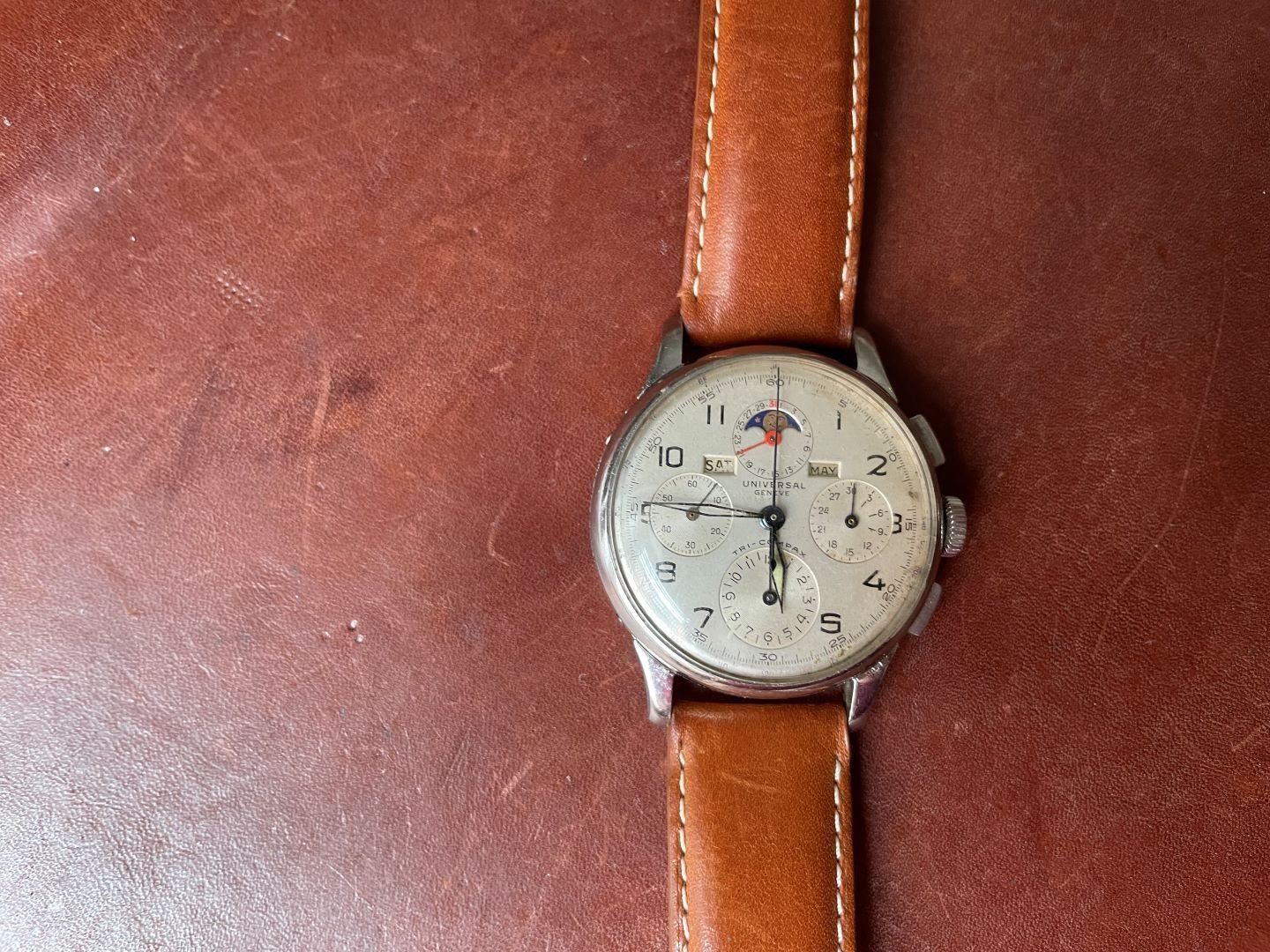
What is really special in my opinion about Universal Geneve is how it is really only known by the connoisseurs of the watch-collecting world, because they don't really exist anymore. They never really ended up being discount quartz. I'm sure that you know, they did make some quartz watches later when they were bought by another group, but really they maintain their reputation. They used the same case makers as all the other major brands, but their number one, um, there, their only distributor in North America was the Stern family, the family owns Patek Philippe now. They also own the distributorship in New York City, Henri Stern, and they sold Patek and they sold Universal Geneve. The Tricompax, which I showed - the reason it's called a Tricompax is because it has three additional sub-dials.
THM: That’s a unique timepiece to own. What’s next?
Greg: The DOXA diving watches are amazing watches. These things are really like a little underwater sea vehicle. They're really rugged, thick crystals, and very waterproof. They were part of a group called Synchron. They bought a bunch of different companies, SEMA, and different companies. I kind of prefer this model to the earlier ones. The bracelets are a little bit different. But something ironic because nobody going down to the undersea world would like to wear a diving watch because it's ultra-cool. It can be a little heavy. You could hurt somebody if you hit them by accident, but I love Doxa.
THM: I think that comes down to all complications, right? You don't really need a minute repeater in your watch. But it's all about wanting it at the end of the day. And what’s the last timepiece you’d like to speak about?
Greg: The last one I wanted to talk about is very dear to me and it’s one of my favorite brands - The Zenith El Primero. I bought this watch particularly from a collector in Schenectady, New York. I don't know if anybody knows where that is, but it's an American Indian name. He didn't tell me his history or anything, but I assumed that he was an important engineer type of a person because Zenith was not very well known in America and the fact that this guy lived in Schenectady, New York, which is up in near Albany, on the Mohawk river seemed very like how did he even know that that was a good watch to buy? When I bought it from him, it was just as if he had bought it and he wore it for a long time. Then he sold it just like that to me. Nothing was changed. I don't think he ever did anything spectacular with it. It's just a good watch. And I have never serviced it. It runs perfectly. It has a great feature in my opinion.
One of the great things about El Primero is that it has three different sub dials, three different shades of blue, gray to blue, and they overlap. Who designed these things? I mean, Swiss designers are not known for fashion. But whoever designed this watch, is a genius. Nobody had ever done this before. The beautiful thing about El Primero in my opinion is they still make the same movement today. It has a different number. But, the parts, movement, specifications, precision are the same. In fact, when Zenith was struggling to start back up after the seventies, when things went down, they supplied Rolex with the movement for the automatic Daytona and Rolex said to them, we love the movement. We're not going to use a date. It's a chronograph.
It is kind of ridiculous to have a date on a chronograph, but they said, we're not going to have a date. And they said, you know this watch, it beats at 36,000 beats per minute. That's a very high speed movement. So it's very accurate. But the amount of precision that you need to make a watch to that, the lubricants themselves are not liquid. They're a powdered lubricant that Zenith had to apply to this. And Zenith said, we made these, so they never need to be serviced. And here's the proof, but Rolex said we're not doing this because this is just too, it's too much. So they actually had them downgrade the accuracy to 28,000 beats per minute vibrations per minute, as opposed to what's it.
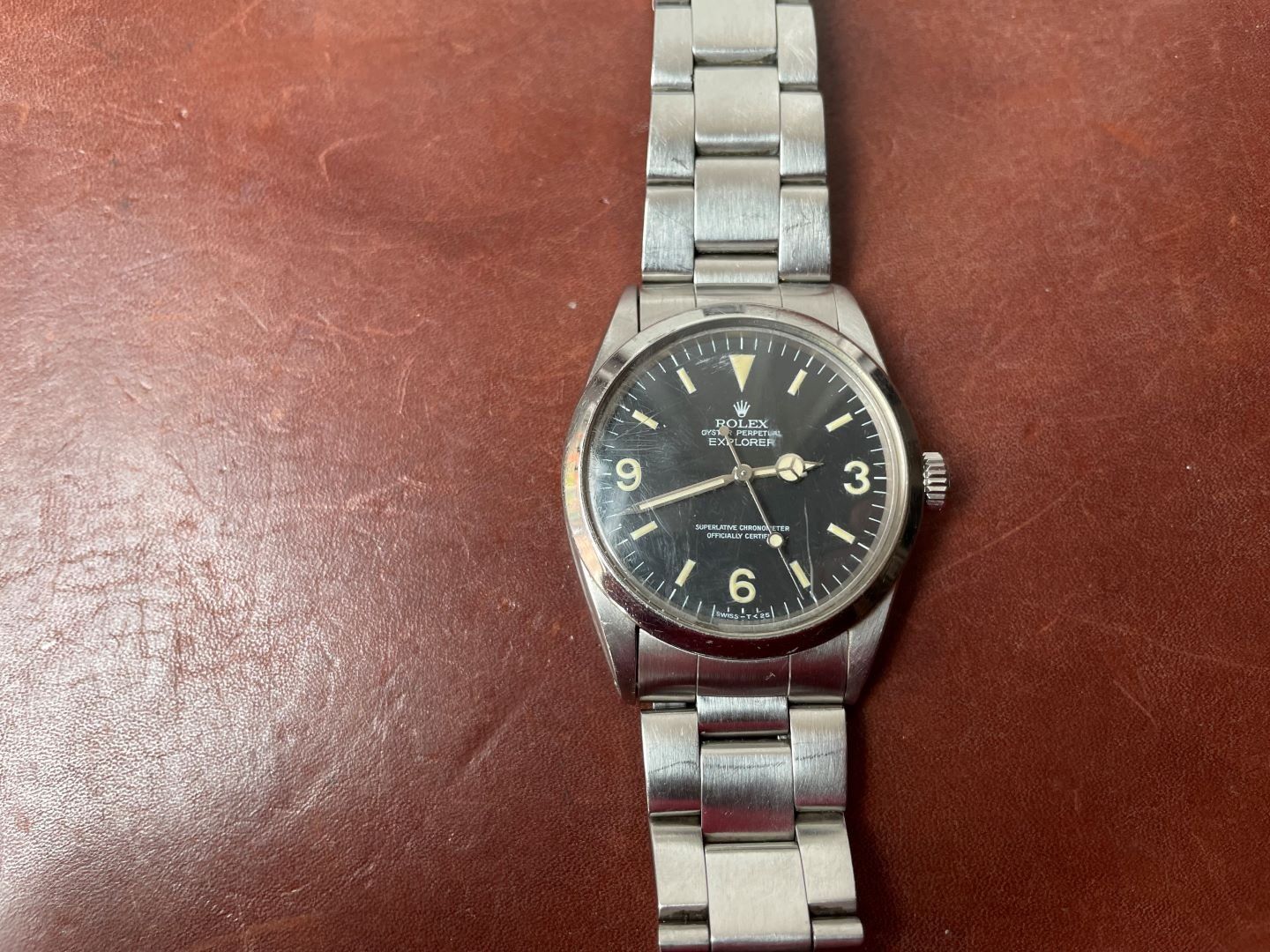
Watches like these are simply collectibles - right from Swatch to the military timepieces. It's participating in some kind of a history, even though we may not have any real connection to it. We may not have known anybody who bought in a war or went into outer space. And I think that there's always an appeal for that. Greg goes on to share that networking is important to get your hands on vintage timepieces.
Stay tuned for our next episode as we dive deeper into the world of vintage timepieces!
No articles found


